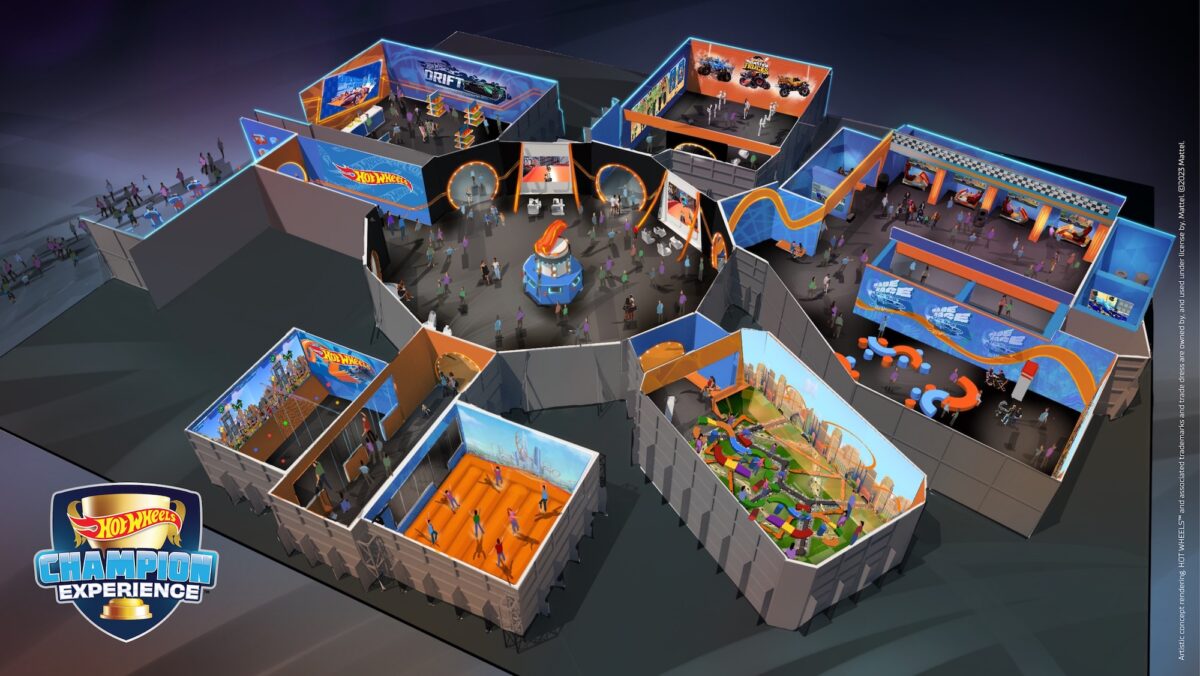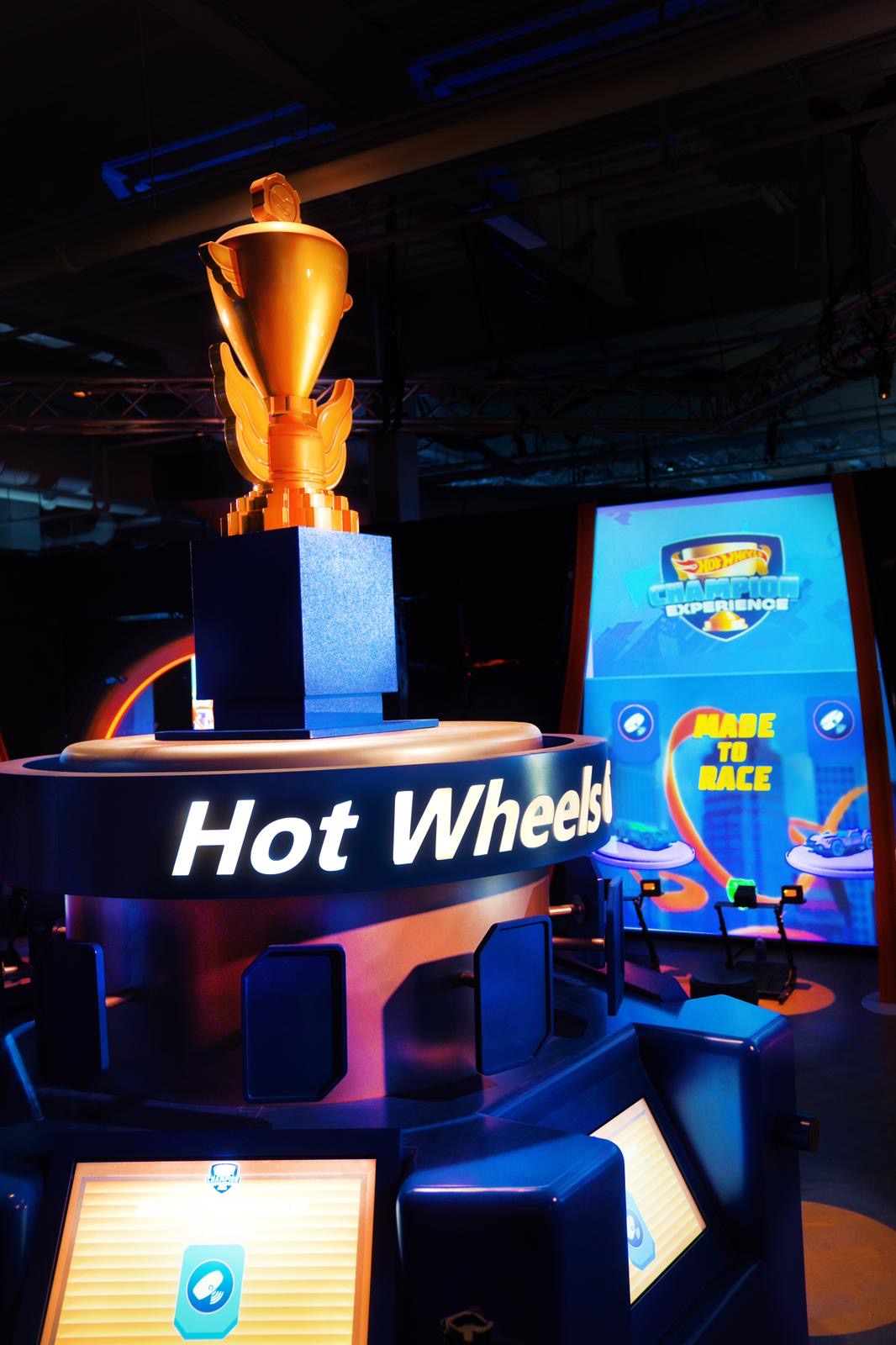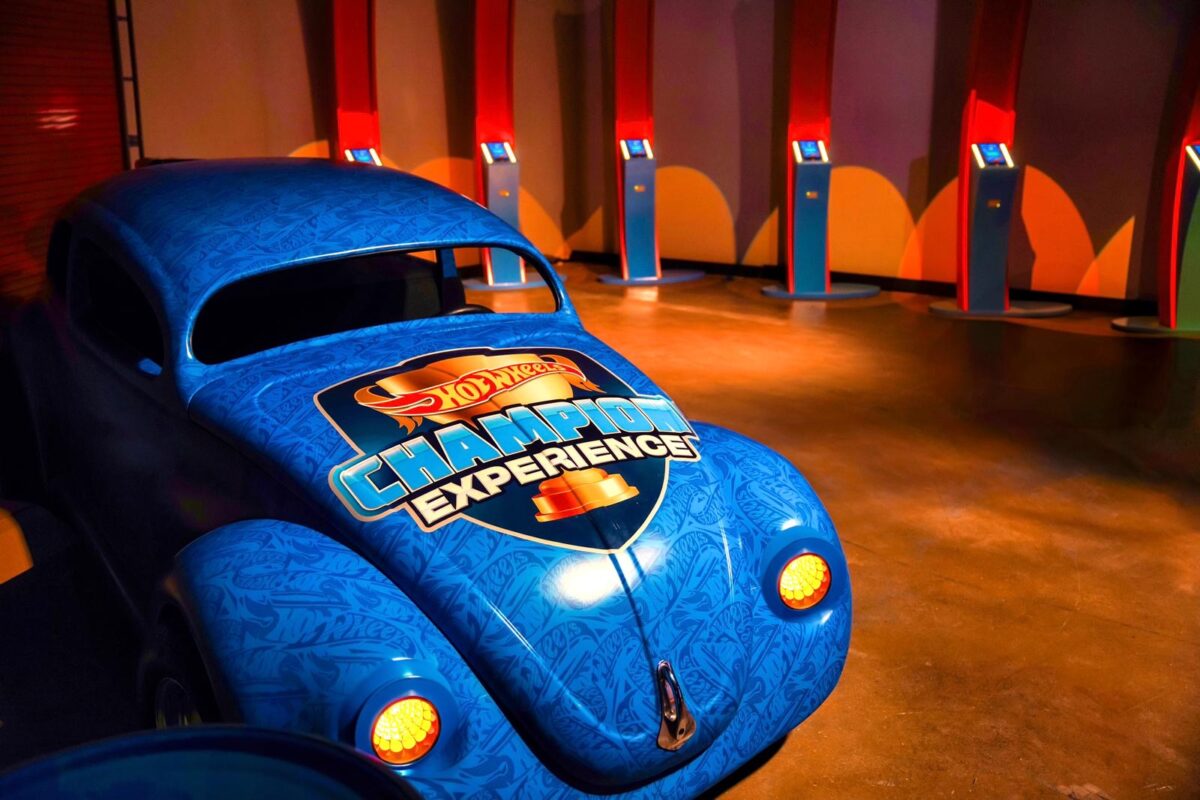A huge new interactive experience in Tysons lets you control toy cars by jumping on a trampoline and laying pillows on the floor. The limited-time installation is meant for kids, but adults will get a kick out of seeing how it all works.
After upwards of $10 million in development, the Hot Wheels Champion Experience opened last week in the Tysons Corner Center mall.
“Every time you jump on the trampoline, you’re affecting the arts and the graphics that are on the wall,” said CEO Carmi Wurtman of Smart Entertainment, the tech company whose XSpace platform powers the experience. “Every movement that you make, your silhouettes are making cars on the walls do different stunts.”
In other words: This isn’t the Hot Wheels experience your elders encountered when Mattel first introduced the ubiquitous toys back in 1968. This one instead uses new and emerging tech, with features ranging from gaming to light detection to 3D projections, to enable a mix of virtual and physical interactions.

The setup and stack
The event is laid out with a main hall and several annexed wings that spread out over a 16,000-square-foot imprint at Tysons Corner Center, a shopping mall in Fairfax County, Virginia.
The interactive trampoline’s room is outfitted with Kinect sensors hanging from the roof on a structure called a truss, which is a rigid object composed of a series of connected beams. The sensors feed motion data back to a central server room as well as various local on-site servers, which are in charge of real-time renderings on the room’s walls.
In another wing, children can build a digital racetrack for their cars by laying down pillows in a line. The pillows have a reflective material that is easily picked up by infrared cameras, and the digital racetrack is formed in a matter of seconds.
Yet another room creates digital versions of drawings that kids make of cars. After they choose from a series of car designs and fill in the lines on paper, they can then input the drawing into a scanner. The software then renders a 360-degree version of their car with the colors and design they chose. Lidar sensors installed on-site sense touching gestures on the walls and allow the children to interact with the car they created.
In terms of the software, 90% of the programming was built on the cross-platform gaming engine Unity. The remaining 10% was developed using TouchDesigner, a visual development platform. The code is mainly written in C# and C++.
Some of the other exhibits use Arduino controllers for different physical game interfaces. Wide-angle webcams let kids take selfies with their Hot Wheels cars. The overall experience has over 100 local servers scattered around the site and a complex system of wiring to connect them to each experience.
“We probably have an amount of cables from Virginia all the way to LA,” said Wurtman, the Smart Entertainment CEO. “That’s how much cabling this project has.”

The company also hosts a large remote central server that stores data about the experience for guests to access after they leave. Each attendee that walks in is outfitted with an RFID (Radio Frequency Identification) bracelet, which tracks where they go during the experience and whether they hit all the attractions. That data is sent to the remote server, through which guests can see what digital badges they won from completing activities and access any augmented reality photos or videos they took.
The reusability factor
The beauty of this software is its reusability, Wurtman said.
“This whole experience sits on a digital platform where you can pretty easily change the content layer,” said Wurtman. “Now it’s Hot Wheels, but next year, we can be doing Smurfs or Batman or something else.”
The technology was first exhibited in Tel Aviv, Israel using non-branded intellectual property. Smart Entertainment later partnered with Los Angeles, California-based immersive experiences producer SEE Touring Exhibitions and Mattel, which also oversees the Barbie and American Girl brands, to bring the experience to the United States. Wurtman, a former concert promoter, estimated the investment in the overall development — including components done in Tel Aviv and the DC area — to be around $10 million.
“That’s not something which will be recouped in one run of the project, but we have a long-term vision here as a tech company,” he said. “If we’re as successful as we hope to be, we’ll have different sets of these running all around the world.”
Reusing the technology for future exhibitions will be a fraction of the initial cost, according to Wurtman. Changing the content layer for them will cost about half a million to $1 million, and building sets in new locations will cost about $3 million.
Despite these costs, Wurtman hopes that the platform can create an avenue for children to interact with each other as well as technology.
“I have three kids. As a parent, we’re always concerned that our kids are always on their handhelds and they’re using technology by themselves,” Wurtman said. “This is the way to use technology that brings people to play together.”







